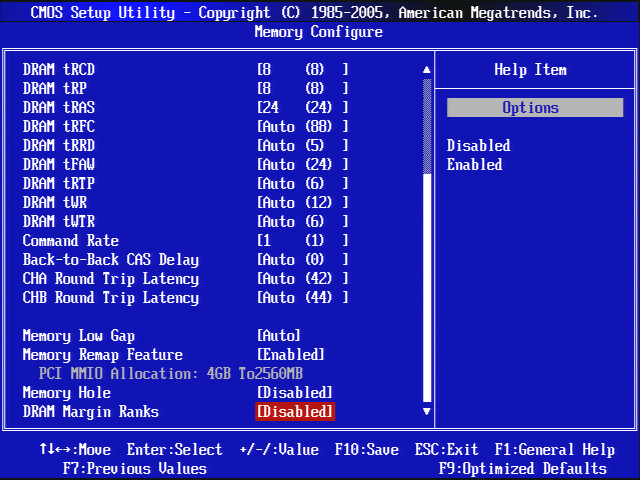Extreme P55: Four LGA 1156 Motherboards Over $250
With better efficiency and more aggressive Intel Turbo Boost binning, LGA 1156-based processors could be the right choice for some high-end machines. We look at a few premium motherboards that make these builds possible. Do they best Intel's X58 platform?
EVGA P55 Classified 200
EVGA’s approach to high-end gaming is completely different from Asus,' as the company endows its P55 Classified 200 with dual-gigabit network controllers, dual eSATA ports, and an impressive six x16-length PCIe slots.
How is EVGA able to supply so many high-bandwidth slots when the CPU supports only 16 lanes? The “dirty little secret” is that only the top x16 slot is able to access all those lanes, and only when a single card is installed. The other four red slots share eight of the processor’s lanes via Nvidia’s NF200-SLI-A3 bridge. We knew most readers would find this bit of information incredible, so we took a photo that clearly shows the top slot’s eight fixed and eight flexible pathways, with four two-lane electronic switches that enable the nForce 200 PCIe bridge whenever more than one card is installed.
The black x16-length slot is limited to four 2.5 GT/s lanes by its P55 Express PCH connection, but will likely be useless in most builds, since it’s only a single space beneath the processor-driven x16 slot. The uppermost PCIe x1 slot, which is the only other independent slot, supports full-length cards thanks to a cut-away portion on the nearby nForce 200 heat sink.
At 10.375” wide, EVGA’s P55 Classified 200 is slightly larger than the 9.625” full ATX standard. That’s something users building a luggable system need to consider when choosing a case. But more importantly, it puts the forward-facing SATA ports even closer to any hard drive cage that could potentially prevent cable insertion.
Part of that added space is used for EVGA’s built-in “Show-Volt” volt meter, which is a particularly handy feature. Rather than being connected directly from various rails, it allows tuners to take their own measurements using an included cable at various points, such as the row of rail-detection points (VCORE, VTT, DIMM, PCH, and PLL) along the motherboard’s top edge. Potential buyers who would like to visually see “how much” bigger the P55 Classified 200 is than a standard board can also refer to the longer white line around the “Show-Volt” meter to see where a standard-sized PCB would end.
Layout strengths include the absence of any front panel connectors in the bottom rear corner and every power connector is placed where we prefer to see them, give or take an inch. One unusual strength is the dual eight-pin CPU power connectors used to support an all-digital voltage regulator with up to 600W of power. With that much power available to the CPU, it’s probably a good thing EVGA chose to use gold plating of three times the normal thickness to protect its LGA 1156 pins.
EVGA understands that most gamers don’t have more than six internal drives, and it instead uses the chipset’s three remaining lanes to provide a bi-directional 2.5Gb interface with one eSATA and two Gigabit Ethernet controllers. While many of EVGA’s competitors use a legacy PCI interface to address at least one of those three functions, the only place such a connection is found on the P55 Classified 200 is for its legacy FireWire controller.
Get Tom's Hardware's best news and in-depth reviews, straight to your inbox.
EVGA also includes its ECP V2 controller to extend several onboard functions away from the motherboard itself, which is particularly handy when parts such as the onboard Port 80 display and Power/Rest/CLR_CMOS buttons are covered up by graphics cards. However, it’s unfortunate that this device is only really useful when the motherboard is outside the case, since EVGA makes no provisions for mounting it into an external drive bay.
Users who want even more external control over the P55 Classified 200’s overclocking features will find an EVGA EVbot connector on the I/O panel, although the handheld controller for that function must be purchased separately.
BIOS
EVGA’s Frequency/Voltage Control menu contains the most frequently used overclocking controls, plus DIMM reference and PWM frequency settings. The company even provides separate boot and operational controls for CPU Core and Uncore (VTT) voltage, helping tuners overcome cold-boot issues.
The P55 Classified 200 stores up to four custom BIOS configurations as user profiles, a feature that is especially useful on a board that can be somewhat tricky to overclock. Fortunately, EVGA provides overclocking guides in its community forum that can help tuners find a moderately high starting point.
The DRAM Timings menu has a full list of basic and advanced timing controls, with Auto functions that not only simplify basic adjustments but also show detected values.
Accessories
In addition to the expected items, EVGA provides a voltmeter cable and two different 3-way SLI bridges, each with different slot spacing, in its P55 Classified 200 installation kit.
Current page: EVGA P55 Classified 200
Prev Page Asus P7P55D-E Premium Next Page MSI Big Bang Trinergy









